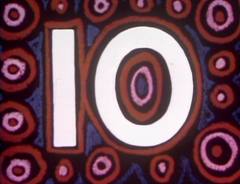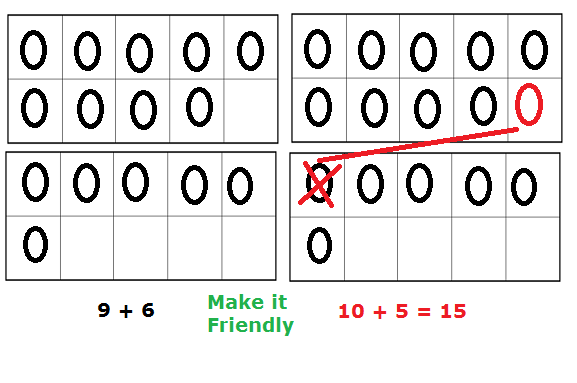Addition Games
Addition games that will teach your child the strategy of:
Friendly Ten

This strategy is more sophisticated because it involves making one of the numbers in an equation a ten. Ten is easier to add/subtract , it is a friendly number. When you are adding 8 or 9 to a number you can use this strategy.
Here is how it works:
You turn the eight or nine into ten by borrowing either 1 or 2 from the other number your adding. It sounds confusing but, it is really helpful..let me show you.
Your child is adding 9+6, you can borrow 1 from the 6, to turn the 9 into 10. Since you borrowed 1 from the 6 it has become 5. Now you are left with 10+5, which is 15. After practicing this process it takes fractions of a second to do equations that add 8 or 9 in your head. It is an incredible strategy.

Addition Games Ideas:
1. Give me ten. Periodically give your child a chance to round 8 and 9 up to ten and tell you how many numbers they had to add to get 10. For example, if I say give me 10 from 8 - they say "add 2".
2. Look for 8's and 9's when you are out and about. Are there any numbers next to the eight and nine- if so add 8 or 9 to that number (license plates, bill boards, business addresses are great places to find these numbers).
3. Lightening
1. Remove the 8 and 9 cards from a deck of cards and put them to the side.
2. Split the remaining cards in the deck evenly between players.
3. Play in rounds. One player flips a card over from the 8 and 9 pile.
4. On the count of 3 all players flip the top card in their pile over and place their cards in the middle.
5. Players add the 8 or 9 card to the card they flipped over. First player who adds correctly collects all the cards in the middle. Now move on the round 2.
Whoever has the most cards wins!
2nd grade students should be able to answer Friendly Ten math facts using a strategy that works for them.
3rd Grade students are expected to master these facts. Mastery means they can answer in 3 seconds or less and be accurate.
Return to Home Page from "Addition Games"
About Me Privacy Policy/Disclaimer Feedback Copyright 2024 themathhacker.com
